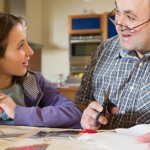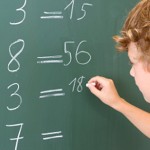Probability Worksheet and Explanation
We’ve structured this information to help children with their education. It is targeted at children in years 5 and 6 and the questions for the worksheet have been stripped from past papers. Having an understanding of probability is part of the primary school curriculum and children will deal with probability in both KS1 and KS2.
The Information below will give an overview of the topic and we have included a detailed worksheet with full answers. The worksheet includes 22 probability questions and is relevant for KS2 pupils approaching their SATS test.
Download Free Probability Worksheet – Questions
Download Free Probability Worksheet – Answers… coming soon
If you are not ready to download the worksheets yet, then read on for some information about probability. This has provided to introduce the topics covered in the worksheet for those that might be unfamiliar but also as a quick revision tool for those that would like a quick refresher before accessing the worksheet.
Probability Explained
Probability Explanation
Probability describes how likely a result or outcome is. A commonly used example is the coin toss, where if you flip a regular coin, the probability of landing with heads facing up is 50% or ½. The probability of landing with tails facing up is also ½ and these present the only two possible outcomes because ½ + ½ is equal to 1. When talking about probability it is important that it is understood that all possible outcomes for the situation add up to 1. Just to reinforce this point further we’ll discuss a dice related example. In this example, we are using an equal 6-sided dice. If we roll the dice there is a 1/6 chance that it will land on a 1, 2, 3, 4, 5 or 6. As these represent all the possible outcomes, if we add 1/6 six times it should, therefore, equal 1, which it does.
Key Points to Understand
- The larger the fraction (e.g. the closer its value to 1) the more likely the outcome. This is important to understand as questions frequently ask for proof that something is more likely to happen in comparison to something else. If children are able to understand that larger fractions are more likely to happen they can then supply this proof.
- Multiple outcomes are possible for a single event and each of these outcomes may have a different likelihood.
- The mechanics of dice and spinners. These are two of the most common probability teaching tools and so it is important that children understand how they work and how they relate to probability.
- How probability ties in with the work children will have done with fractions and decimals.
Example Uses of Probability
There is specific probability terminology that explains the relative likelihood of an event that children need to become familiar with. Some examples of this include:
- There is a high chance that it will rain at some point this month.
- It is unlikely that it I will roll 3 sixes in a row.
- There is no chance that my dog will start talking English today.
- It is certain that the sun will rise and set today.






